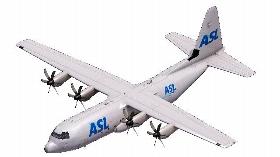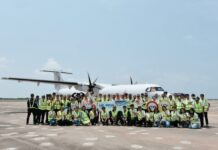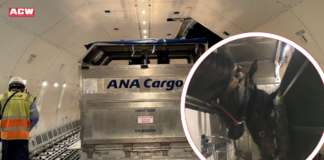

Lockheed Martin has obtained a letter of intent from South African company ASL Aviation Group for 10 LM-100J Super Hercules, the civilian version of Lockheed’s military cargo transport C-130J Super Hercules.
The C-130J can carry up to 18 tonnes of cargo and is used by 15 nations. Announced on 16 July at the Farnborough International Airshow, ASL expects to turn the letter of intent into a firm order over the next 18 months for 10 LM-100J, which would replace its fleet of nine L-100 starting in 2018. The L-100 is the LM-100J’s predecessor.
The 2018 LM-100J delivery date is dependent on the US government’s Federal Aviation Adminstration (FAA) certifying the aircraft for civilian use. It is only being certified for cargo, the LM-100J is not being approved for carrying passengers.
ASL has been using Boeing 737-400 Combis as back-up as it transitions its fleet from its old L-100, but the -400 are unable to fulfil the roles of air drop and fire fighting, both services ASL provides. The LM-100J will be able to carry 33 per cent more cargo than its predecessor, the L-100, which was last marketed in the 1990s. More than 100 L-100s were produced from 1964 to 1992. The LM-100J will have a range of 4,000 kilometres with a 18 tonne payload and can operate with two crew instead of the LM-100’s three. The LM-100J has a maximum cruise speed of 355 knots.
Lockheed’s aeronautics vice president, Orlando Carvalho, says that the LM-100J has a, “mid-sixties,” million dollar price tag. An order for 10 LM-100J would therefore be between six and seven hundred million US dollars. An LM-100J prototype will be built and flight tested, probably at the C-130 factory near Marietta (US), starting in the first half of 2017. Lockheed’s vice president and deputy for the C-130 programmes, Tony Frese, tells Air Cargo Week that the company would use the flight test data to: “complete our reporting and documentation and submit that back to the FAA toward the end of 2017, it would take them roughly three to six months to finalise that and issue the type certificate.” This means the LM-100J should have its type certificate by June, for delivery of the first aircraft to ASL later that year.
Lockheed announced in February that it was seeking a type design update from the FAA. The LM-100J will need this because it has new avionics and new Rolls Royce engines. The fuselage, however, is the same as the standard cargo C-130J version and this was used for the stretched L-100, which is its 30 version.











